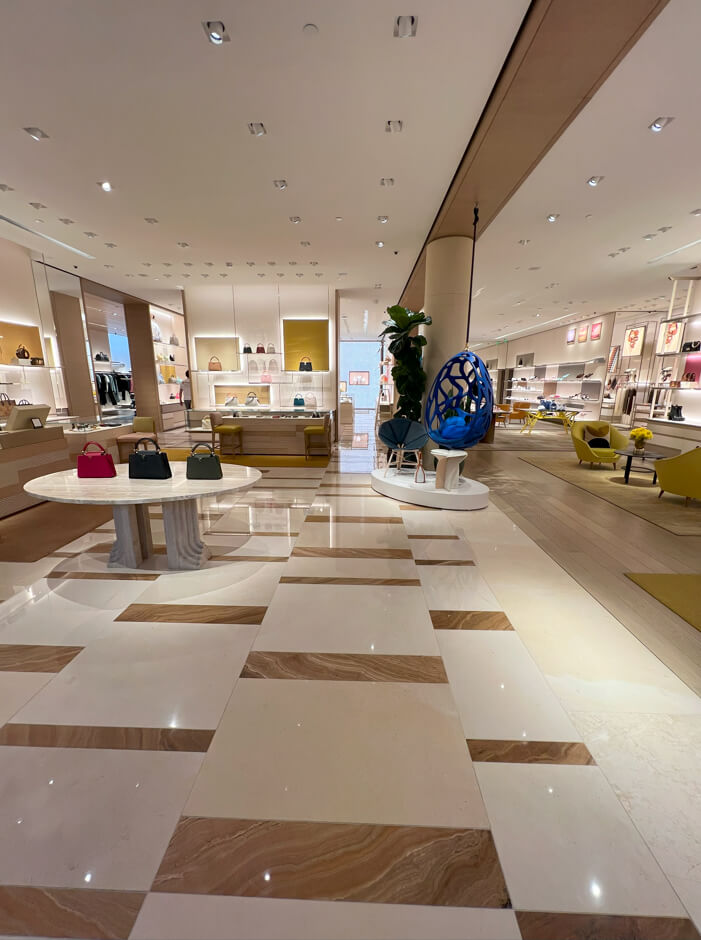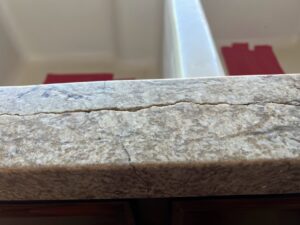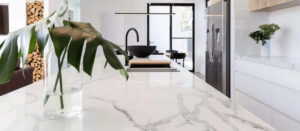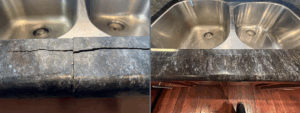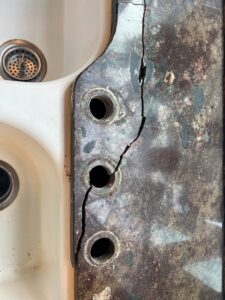Stone Floor Polishing 101: Maintaining Marble, Granite, and Limestone Surfaces
Stone floors add elegance and value to any space, with their natural beauty and durability. However, even the toughest stones like marble, granite, and limestone can lose their shine over time. Regular polishing not only restores their luster but also helps protect them from wear and tear. Here’s a comprehensive guide to understanding stone floor polishing techniques, equipment, and best practices, along with common signs that it’s time for a professional polish.
Why Stone Floors Need Polishing
Stone floors undergo constant use, especially in high-traffic areas, which leads to dullness, scratches, and sometimes even etching. Polishing is an essential part of stone maintenance, as it brings back the stone’s shine, smooths out minor scratches, and keeps it looking as good as new.
Marble, granite, and limestone each have unique characteristics, which means they require slightly different approaches to polishing. However, regular polishing is crucial for all stone types to maintain their appearance and integrity.
Signs It’s Time for a Professional Polish
How do you know when your stone floors need a professional polish? Here are some signs:
- Dull or Cloudy Appearance: When the surface of your stone loses its natural shine and looks dull or cloudy, it’s a clear indicator that it needs polishing.
- Visible Scratches: Minor scratches can often be polished out, restoring the floor to a smooth, uniform finish.
- Stubborn Stains: Professional polishing can help reduce or remove stains that regular cleaning can’t address.
- Etching: Acidic spills on marble or limestone can cause etching, creating dull spots that may need polishing to remove.
Stone Floor Polishing Techniques
Polishing stone floors involves specialized equipment and techniques to ensure a smooth, glossy finish. Here’s a look at some common polishing techniques:
1. Diamond Polishing Pads
Diamond polishing pads are commonly used for marble and granite. These pads come in various grit levels, from coarse to fine, and are attached to a polishing machine. The technician starts with a coarser grit to remove scratches and then moves to finer grits to achieve a mirror-like finish. This method is highly effective for removing minor imperfections and restoring a high gloss.
2. Powder Polishing
Powder polishing is often used for softer stones like marble. A polishing powder, usually composed of fine abrasives, is mixed with water and worked into the stone with a polishing pad. This technique enhances the stone’s natural shine and is particularly effective for removing etching and light stains.
3. Crystallization
Crystallization is a process where a special solution is applied to the stone, and then a steel wool pad is used to buff the surface. This creates a chemical reaction that forms a harder, glossy layer on the stone. While popular for marble, this technique requires careful handling, as it’s less effective for granite and can alter the stone’s structure if overused.
Equipment Used in Stone Floor Polishing
Stone floor polishing requires professional-grade equipment to achieve high-quality results. At Sureshine Care and Restoration Services, Inc., we use specialized tools that ensure a smooth and even polish.
- Floor Buffers and Polishers: These machines are essential for evenly distributing polishing compounds and creating a smooth, shiny surface.
- Diamond Abrasive Pads: Used with floor polishers, these pads of varying grit levels are essential for achieving a scratch-free, glossy finish.
- High-Pressure Cleaning Systems: Before polishing, we use truckmount high-pressure cleaning systems to remove embedded dirt and prepare the surface, ensuring a flawless polish.
Best Practices for Maintaining Polished Stone Floors
To keep your stone floors looking polished and new, follow these maintenance tips:
1. Regular Dusting and Mopping
Dust and dirt particles can scratch the surface of polished stone. Regular dusting and mopping with a soft, dry mop help prevent these small scratches and keep the shine intact.
2. Use pH-Neutral Cleaners
Avoid acidic or abrasive cleaners, which can damage stone surfaces. Instead, use pH-neutral cleaners designed for natural stone to maintain its beauty and strength.
3. Place Rugs and Mats in High-Traffic Areas
Protect your stone floors by placing rugs or mats in areas with high foot traffic. This helps reduce wear and tear and keeps dirt and debris from scratching the floor.
4. Schedule Regular Professional Polishing
Even with good maintenance practices, professional polishing is essential every few years. Regular polishing restores the stone’s shine and protects it from deeper damage.
Why Choose Sureshine for Stone Floor Polishing?
At Sureshine Care and Restoration Services, Inc., we specialize in maintaining and restoring the beauty of marble, granite, limestone, and other natural stones. Our team of skilled technicians uses top-of-the-line equipment and proven techniques to ensure a flawless polish every time. With years of experience in stone care, we know exactly how to treat each type of stone to bring out its best.
Our truckmount high-pressure systems, training system, and expertise in restoration techniques allow us to provide comprehensive polishing services that keep your floors looking stunning.
Frequently Asked Questions
Q: How often should stone floors be polished?
A: The frequency of polishing depends on foot traffic and the type of stone. For high-traffic areas, annual polishing is recommended, while other areas may only need polishing every 2-3 years.
Q: Can I polish stone floors myself?
A: DIY polishing kits are available, but achieving a professional-level polish requires specialized equipment and experience. For the best results, professional polishing is recommended.
Q: Will polishing remove deep scratches from my stone floor?
A: Polishing can remove minor scratches, but deep scratches may require more intensive resurfacing or restoration techniques.
Q: Does polishing make stone floors slippery?
A: Polishing enhances the stone’s natural shine, which can make it appear slippery. However, it does not necessarily make the floor more slippery. Non-slip treatments are available for areas where slip resistance is a concern.
Q: How can I keep my stone floors looking polished between professional services?
A: Regular dust mopping and vacuuming, cleaning with a pH-neutral stone cleaner while drying the floor to remove the dirty water, and protecting high-traffic areas with rugs or mats will help maintain the polish.
Contact Sureshine for Expert Stone Floor Polishing
If your marble, granite, or limestone floors need a refresh, Sureshine Care and Restoration Services, Inc. is here to help. Our skilled team provides top-notch polishing services that restore the beauty and durability of your stone surfaces. Contact us today to schedule a service or learn more about our stone floor polishing solutions.

